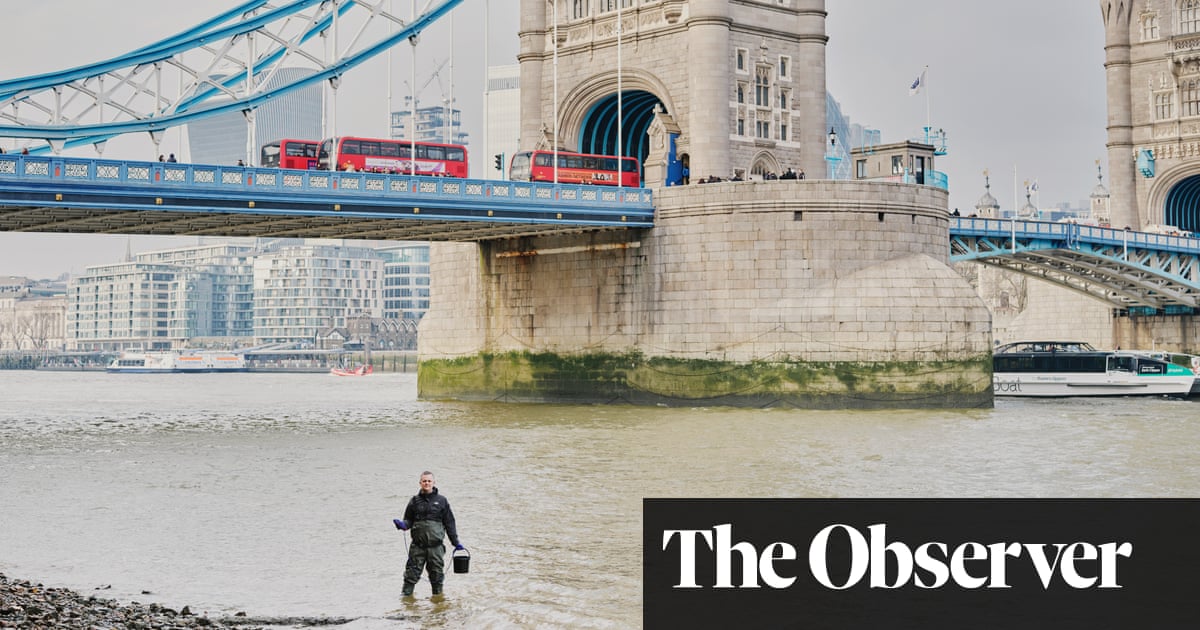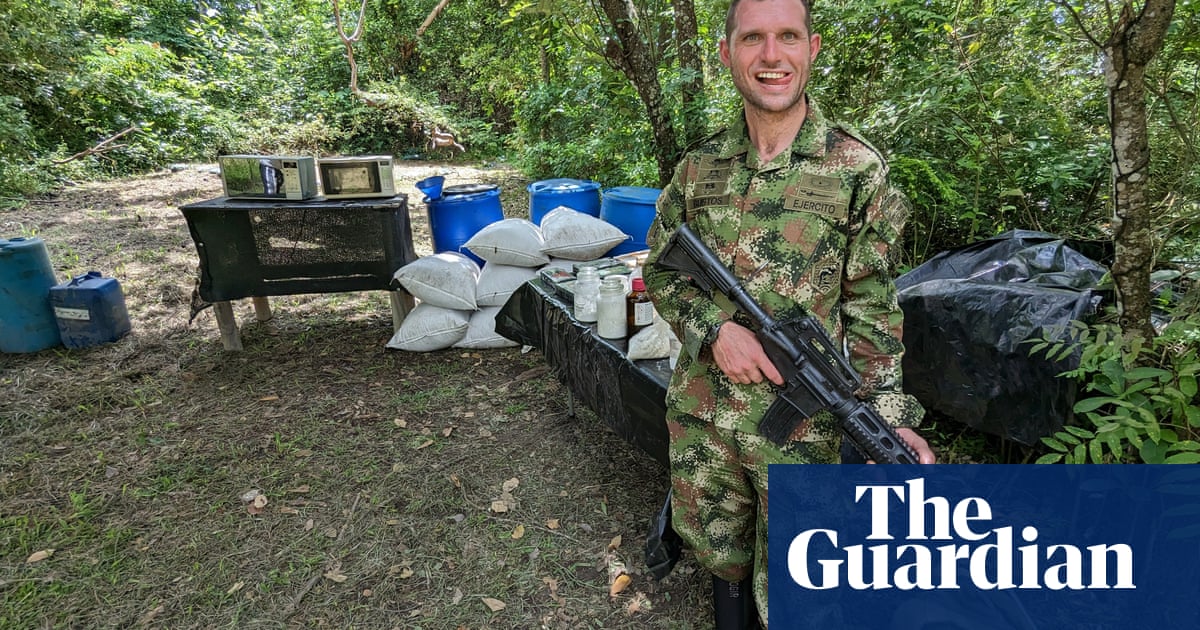
If you live in London, Dr Leon Barron knows what you’re up to. He knows what prescribed drugs you’re on – painkillers, antidepressants, antipsychotics or beta blockers – and what illicit ones you’re taking for fun. He knows if you’ve been drinking and when (“Friday and Saturday are the main ones”); perhaps even if you’re worried about your dog getting fleas.
Of course, I only mean the collective “you”, the city. Barron, who leads the Emerging Chemical Contaminants team at Imperial College, has no idea what any individual is taking or doing; he explains that very clearly and carefully. He has a research scientist’s precision plus the slight wariness of someone whose research has grabbed headlines, with the inaccuracies and misinterpretations that brings (I wonder what he thought about “Prawn to be wild”, reporting his research on cocaine residue in wild river shrimps.) But he’s also infectiously enthusiastic and generous with his time, spending a whole morning taking me round his lab and through his groundbreaking work.
That work is analysing the chemical composition of wastewater – what we flush down the loo, wash down the sink, shower or bath, what comes from washing machines and dishwashers, but also run-off from street drains – both before and after treatment.
That allows Barron to capture a precise snapshot not of individual behaviour, but of what’s happening in a city, or part of a city. In a recently published paper, for example, analysis allowed his team to trace how the chemical profile of 14 waterways around London evolved over the pandemic, and how levels of various drugs declined during lockdown then recovered (presumably as people started to travel into the city again). They included the anti-anxiety drugs, antidepressants, antibiotics and pain medication, as well as cocaine.
Cocaine has become something of a speciality. Barron’s earlier work tracking its use in London showed consumption doubling between 2011 and 2014-15, then stabilising. “There’s plenty of it there,” he says (20-30kg per day in London was the headline figure). Indeed, if you don’t find cocaine in a wastewater sample, he says, “That can be an issue in the lab.” Consumption is so prevalent that despite the fact that water treatment is very effective at removing cocaine, enough remains that, he says: “I could see it in wild shrimp in rural Suffolk.”
These startling findings brought him into the public eye, but Barron has been studying water since his PhD. He’s a water detective, basically, analysing what’s in it, and what that tells us about our health, our environment and the risks to both.
Water runs through not just his work, but his life – Barron grew up in Ireland, in County Wexford, living around and swimming in the River Barrow and going out in his father’s boat. When he moved to King’s College London in 2009, proximity to the Thames was a major draw. He still cycles home along it, “to be close to the water”. Even his diversion into forensics (from 2009 to 2020 his frontline work involved assisting police forces with investigations involving illicit drugs, DNA analysis and more) involved water: fingerprints, he explained on The Life Scientific, “are basically water”.
Now water is at the heart of his White City lab, built to his precise spec when his team moved to Imperial College in 2020. It also investigates the “chemical footprint” of homes, the impact of pesticides on soil and invertebrates and street air quality, but at its heart is the 24/7 high-grade water analysis lab with its rumbling mass spectrometers. It doesn’t smell at all, if you’re curious (“Wastewater doesn’t look very much like you’d think at all,” he says). The whole place is sleek and hi-tech, packed with expensive equipment.
It’s astonishing what all this technology has made possible. Analysis that used to take hours, or even a day, can now be done in five minutes. Expanding the team’s testing capability and precision analysis means: “We can see things down to the equivalent of a teaspoon in 40 Olympic-sized swimming pools. Tiny, tiny quantities.”
Sticking with illegal drugs for a moment, that means the lab can track the impact of a drug seizure on consumption patterns, he says; or monitor, for example, off-prescription use of benzodiazepines. Currently, he says, there’s particular interest in tracking the prevalence of opioids in the wake of the recent US crisis and the emergence of new, potentially deadly synthetic drugs.
Tracking drug consumption – illegal and prescription – potentially raises ethical issues, Barron points out. As the ability to pinpoint the origin of chemicals in water becomes more precise, there’s a danger that particular places – prisons, hospitals, schools – could be singled out and stigmatised. He reiterates that: “We can’t catch anybody; we can’t tell who’s taking it or how much they’re taking.”
In contrast to his forensic work, the aim here is prevention: preventing deaths from a toxic batch of some new drug, exploring what antidepressant use information reveals about prevalence of depression, or providing information to allow law enforcement and treatment initiatives to be more precisely targeted. “The emphasis is on providing support where it’s needed.”
But what wastewater can tell us goes far beyond that, to our health and safety in the widest sense. Sampling also acts as an early warning system for the emergence of disease – in fact this capability predates other uses of wastewater analysis and was used to track polio as far back as the 1940s. It hit headlines in the pandemic with the introduction of the National Wastewater Surveillance System, which capitalised on pre-existing work and technology. “The science of monitoring chemicals helped the Covid pandemic capability rapidly mobilise everywhere,” Barron says. “We were ready to go very quickly.” Then there’s the absolutely crucial issue of antibiotic resistance. The lab can detect the presence of resistant genes in wastewater and, “Now it’s about understanding how many of those turn into bugs that are actually resistant; the actual bad news.”
Barron says that his team have even used water sampling to detect the presence of explosives “in tiny, tiny quantities” and chemicals that could indicate kitchen-sink bomb making, enabling law enforcement to mobilise. Once again, this work is about prevention: “My aim is not forensic, in that the crime has already happened; it’s to stop it in the first place. I’m not interested in reacting.”
Even though “Emerging Chemical Contaminants” is in his job title, Barron counsels against a blanket fear of chemicals. When we meet, I’m reeling from a staggering statistic in his research, that “chemical pollution causes approximately 10 million excess deaths worldwide, representing more fatalities than war and murder.”
He’s reassuring, sort of. “Not all chemicals are bad, I really want that to come across; we probably would live half as long without some of them.” The issue is the sheer unmanageable quantity and how little we know about most of them. “The rate of discovery of chemicals has been increasing; we have an awful lot more chemicals at our disposal than we did even 50 years ago.” There are 350,000 chemicals licensed for large-scale manufacture and use globally and that’s before you start considering the impact of interactions between them. That, of course, is why we need labs like his, carefully monitoring what’s appearing in our environment, and what problems it could cause.
That goes beyond the impact on human health to the environment as a whole. The 2023 London wastewater study took what’s known as a “One Life” approach, flagging potential impacts on the whole ecosystem. Three of the chemicals highlighted are “high risk” because of their potential for negative impacts on wildlife: the anti-inflammatory, diclofenac; an antibiotic; and a pesticide, imidacloprid.
This last came as a surprise: it was banned for outdoor use in 2018, as it posed a danger to bees and only subsequently licensed for use as a pet flea treatment (and in indoor greenhouses). How was it getting into wastewater? The team eventually deduced that Britain’s startling number of pets (“25 million dogs, cats and rabbits; there are only 5 million people in Ireland!”) were being treated – often preventatively – then bathed, or allowed to roll around on beds; their owners washed their hands (and sheets) after treatment. Mystery solved.
While not considered dangerous to humans, these chemicals seem to be washing out to sewers, ending up in rivers as wastewater treatment can’t remove them.
Since he is someone who has spent his career observing and analysing rivers, I’m interested what Barron thinks about the current state of ours, constantly in the headlines, and a source of public rage and distress. He agrees they are in serious trouble. Normally, he says, he wouldn’t have a public presence. “You should only hear from us when there’s an issue. The rivers are an issue.”
Sewage is of course the biggest part of their current plight: raw sewage overflow happens “far too frequently”, he says. Overflow mechanisms “should only be used in catastrophic flooding, that kind of thing, not on a wet day”. The lab’s expertise examining hundreds of chemicals and samples means that it can also identify precisely what is raw, versus treated sewage in a waterway, to help pinpoint when and where there’s a problem. “Then you can pick out where to actually focus your efforts.”
Barron has seen first-hand the rising tide of community concern at our waterways. “This is a very emotive issue, quite rightly, among the general population and I agree with them.” Water matters to him, after all: “If I’m not near water, I get notably agitated. It’s very important to me. It’s well documented; it’s a really good source of mental health having that relationship with your blue space.” The team is regularly contacted by individuals, charities, wild swimming groups and communities expressing concern about their local waterways and it’s an interaction Barron values deeply. “My biggest challenge is to know where and when to take a sample – that can only come from local knowledge. You know your river best.” It is, he says “overwhelming how many people are reaching out to say, ‘Can you help us? Can we help you?’”
As well as flagging problems where they arise, what else can people who are worried about our beleaguered rivers do? “People are not given enough advice,” Barron says, following up with a few suggestions of his own. The first: “Wet wipes are horrendous. Avoid using wet wipes” (he’s a father of four kids under 10 who doesn’t use them; Barron walks the talk).
Next: “Never, ever throw pharmaceuticals down the loo. And do not chuck them in your household waste; bring them back to your pharmacy. I know it’s a little bit of extra effort, but it’s what you can do.” He says he has changed his own behaviour in relation to medicines now, too: “When I’m at the doctor, I ask. I say what medication are you giving me, why is it necessary?” His lab’s work on microplastics has prompted the third, on drinking water: “If you’re buying a bottle, please recycle it. Plastics act as sponges for other chemicals; all the other stuff will stick on to its surface.” He drinks London tapwater himself: “I currently have no reason to doubt the wholesomeness of UK drinking water.”
So, avoid putting household chemicals down the sink, use less plastic generally and if you have a pet, consider limiting flea treatment to times when your housemate is actually infested. I leave, not exactly reassured at the state of our rivers and the dangers of pollution, but with the assurance that monitoring them is in the best, most careful of hands. Barron might say: “You should never know I exist,” but I’m glad I know he does.












